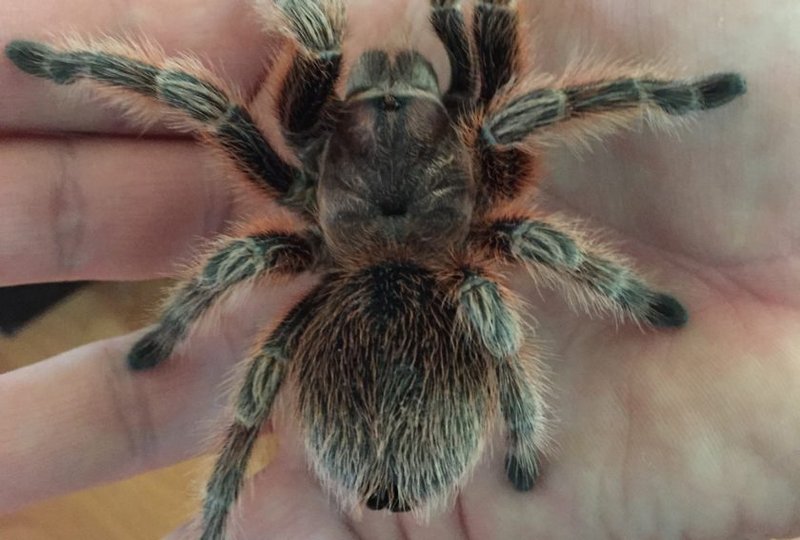
When you think about handling one of these arachnids, it’s easy to wonder if you’re signing up for a pet, or if you’d be better off admiring them from a distance. The Chilean Rose Tarantula, often favored by first-time spider owners, offers a unique combination of beauty and intrigue. But as with any pet, understanding how to handle them properly is key. Whether you’re a curious onlooker or considering one for your home, I’ll guide you through the ins-and-outs of safely handling this fascinating creature.
What Makes the Chilean Rose Tarantula Special?
The Chilean Rose Tarantula stands out for a few reasons. These spiders are known for their docile nature, which can be a relief if you’re wary of handling spiders. Their calm temperament makes them an ideal choice for those new to tarantula ownership. Compared to other species, they’re more likely to tolerate gentle handling, which can be quite appealing.
Another plus is their relatively long lifespans. Female Chilean Roses can live up to 20 years! This means if you adopt one, you’re in for a long-term companion. Plus, they have gorgeous colors, with their bodies often displaying pinkish-brown shades. It’s like having a little piece of art in your home.
However, it’s important to remember that even the friendliest tarantulas can have their off days. If you’re wondering how to keep the handling experience pleasant for both you and your spider, consider their mood and health regularly.
Creating a Comfortable Environment
Before you even think about handling your Chilean Rose, you must ensure their habitat is set up correctly. A well-maintained living space creates a happier and healthier spider, which in turn influences how well they respond to interaction.
Start with a spacious enclosure, at least 10 gallons for adults, filled with a substrate like coconut fiber or peat moss. This mimics their natural habitat and allows for proper burrowing. Make sure to include hiding spots, like caves or plants, because these spiders love to feel secure.
Temperature matters too! Aim for a warm, humid environment, around 75-80°F (24-27°C). A simple heat mat can help maintain the right conditions. With a comfortable home, your tarantula is more likely to be relaxed, which aids in making handling safer for both of you.
When Is It Safe to Handle Your Chilean Rose?
Now, let’s talk about timing. Not every moment is a good opportunity to handle your tarantula. Just like a cat who’s in the mood for play or a snooze, your spider has its own moods.
First, wait at least a week after bringing your tarantula home before attempting to handle it. This gives them time to acclimate to their new environment. Once you feel like they are settled, check for signs of comfort—like exploring their enclosure actively.
It’s best to handle them when they seem calm and active. If they’re hiding or showing defensive behavior (like rearing up), it’s a sign they’re not ready for a meet-and-greet. Handling them when they are in a good mood will not only make it safer for you but also less stressful for your spider.
How to Handle Your Chilean Rose Tarantula Safely
When you’re ready to handle your tarantula, it’s important to approach the task with care. Here’s how to do it safely:
- Prepare Your Space: Make sure you’re in a quiet area away from pets or perils like open windows.
- Use Two Hands: Place one hand flat in their enclosure to encourage them to walk on you. This allows them to feel safe.
- Stay Calm: Your emotions can affect your tarantula. Maintain a relaxed demeanor to ease their nerves.
- Don’t Force It: If they’re hesitant or dig in their heels, don’t pressure them. Respect their pace.
With practice and patience, handling your Chilean Rose can become a rewarding experience. Remember, this is about building trust and creating a bond over time.
Understanding the Risks
While the Chilean Rose Tarantula is generally docile, it’s important to acknowledge that they can react defensively if they feel threatened. Bites, while rare, may occur. Their venom isn’t deadly to humans, but it can cause pain and irritation.
To minimize risks:
– Avoid sudden movements that may startle your spider.
– Don’t handle your tarantula when they’re molting (a vulnerable time for them).
– Keep your hands clean to avoid transferring oils or scents that could distress them.
Should a bite occur, remember to clean the area thoroughly and consult a healthcare professional if needed. Always prioritize your safety and that of your pet.
Alternatives to Handling
If you’re feeling unsure about handling your Chilean Rose Tarantula, there are plenty of alternatives to still enjoy their presence.
Many tarantula lovers find joy in simply observing them. Set up their enclosure in a spot where you can easily watch their daily activities. You’d be amazed at how much personality these creatures can exhibit. Consider creating a bioactive habitat with live plants and small insects to observe natural behaviors, like hunting or burrowing.
Additionally, you could engage in activities like feeding time, which can be thrilling. You’ll see their impressive hunting skills in action and learn more about their natural behaviors without needing to hold them.
Final Thoughts on Handling Your Chilean Rose Tarantula
Handling a Chilean Rose Tarantula can be a safe and enjoyable experience, as long as you approach it with knowledge and care. Remember to create a comfortable environment, choose the right moments for handling, and always prioritize their well-being.
These enchanting spiders can become rewarding companions, and with time and patience, you can build a trusting relationship. So, whether you’re considering adopting one or simply interested in learning more, understanding how to handle them safely makes all the difference. Enjoy the journey into the fascinating world of tarantulas!

